Comprehensive Guide to Electronically Commutated Motors (ECMs)
2024-06-24
2050
Catalog

Figure 1: Electronically Commutated Motors (ECMs)
Electronically Commutated Motors (ECMs) Definition
Electronically Commutated Motors (ECMs) represent a significant advancement in electric motor technology, known for their high efficiency & superior performance. These motors combine the benefits of AC & DC motors by using permanent magnets, like those in DC motors, which eliminate the need for brushes. This design reduces mechanical wear and tear, enhancing the motor's durability & lifespan.
ECMs operate on standard AC power while achieving the efficiency & control usually associated with DC motors. This is possible through the integration of advanced electronic controllers within the motor. These controllers adjust the motor’s speed, torque, and power output based on real-time demands, without needing external sensors or extra control mechanisms. Consequently, ECMs can dynamically modulate their operation, offering substantial energy savings & efficiency compared to Permanent Split Capacitor (PSC) motors, which are limited to fixed speeds.
The benefits of ECMs extend beyond energy efficiency. These motors run quietly, generate less heat, and produce minimal electromagnetic interference. This makes them ideal for applications requiring high precision & reliability, such as HVAC systems, refrigeration, and various industrial machinery. Although the initial investment in ECM technology is higher, the significant reductions in energy costs & maintenance expenses over time make ECMs an increasingly popular choice. They are especially favored in new developments & retrofit projects where long-term cost savings & environmental impact are key factors.
Integral Components of Electronically Commutated Motors

Figure 2: Components of ECM
Electronically Commutated Motors (ECMs) are designed with several key components that enhance their functionality, efficiency, & lifespan. This parts combination sets ECMs apart from conventional motors, especially in energy management, precise control, and durability.
Circuit Board
The circuit board is central to the ECM’s operation, integrating the motor with broader HVAC systems. It features adaptable components like dip switches & jumper pins. These components are useful for fine-tuning airflow and temperature settings in response to environmental conditions. This adaptability allows the ECM to efficiently control heating & cooling systems, optimizing performance & guarantee energy efficiency in various settings.
Electronic Control Module and Motor Configuration
The electronic control module converts standard 120- or 240-V AC power into three-phase DC power. This conversion is managed by a sophisticated power inverter that transitions AC to DC efficiently, allowing the motor to operate under variable power conditions. The ECM’s motor includes an electronic module that not only aids in converting AC to three-phase DC but also enables precise speed adjustments by modulating the power supply frequency. This feature is valuable in applications requiring varied operational speeds, as it enhances control over motor speed and efficiency.
Rotor and Stator Dynamics
At the heart of the ECM is the rotor & stator. The rotor, fitted with permanent magnets, maintains a consistent magnetic field, unlike the variable fields in conventional motors. The stator, surrounding the rotor, consists of laminated steel with embedded windings. When activated, these windings create magnetic fields that interact with the rotor’s magnetic field, causing it to spin. This mechanism is optimized for maximum energy efficiency, contributing to the motor’s superior performance.
Advanced Electronic Controller
The electronic controller within an ECM converts AC to DC and regulating electrical signals to the motor’s windings. Using sophisticated algorithms, it adjusts the motor’s speed, torque, & direction. That will make sure optimal performance & smooth transitions in speed.
Bearings and Sensor Systems
High-quality bearings in ECMs minimize friction & improve the rotor’s smooth operation. Many ECMs include sensor systems, such as Hall effect sensors, to provide accurate feedback on the rotor’s position. In systems without sensors, the controller estimates the rotor’s position using voltage & current measurements, offering an effective control strategy.
Cooling, Windings, and Permanent Magnets
Efficient heat management in ECMs is achieved through cooling systems, which may include passive elements like heat sinks or active components such as cooling fans. The stator windings generate the electromagnetic fields that drive the motor, & the quality of the permanent magnets in the rotor is important. These factors influence the motor’s overall efficiency & the effectiveness of its interaction with the stator’s electromagnetic fields.
Protective Insulation & Enclosure
The ECM's insulation cover protects its electrical components from environmental and mechanical stresses. The casing or enclosure provides physical protection, facilitates heat dissipation, & reduces operational noise. These components are designed to meet specific standards for challenging environments, such as moisture, dust, and mechanical impacts.
Electronically Commutated Motors Working Operation
Electronically Commutated Motors (ECMs) use microprocessor-based control to manage speed, torque, & airflow, making them highly efficient for HVAC applications. These motors are customized during manufacturing for specific HVAC models & cannot be reprogrammed after installation. This ensures peak performance without the need for field recalibration, reducing downtime.

Figure 3: Working Operation of ECM
The microprocessor is useful for the ECM’s adaptability. It maintains consistent airflow, adjusts speed, or changes torque based on system demands. For example, if static pressure increases, indicating a need for more airflow, the microprocessor increases the motor’s speed to stabilize performance. This feature is needed in variable air volume (VAV) systems, where airflow needs frequently change based on occupancy and other factors.
Aside from that, permanent magnets & electromagnets enable high efficiency. The rotor contains permanent magnets that create a constant magnetic field. Surrounding the rotor, the stator has multiple coils or electromagnets. The ECM’s controller activates these coils in sequence, creating magnetic fields that interact with the rotor's magnets, causing it to rotate. This precise activation guarantees smooth & continuous rotation, making the motor highly efficient.
Pros and Cons of Electronically Commutated Motors (ECMs)
Electronically Commutated Motors has both the advantages & disadvantages. Below information provides a balanced view to help in decision-making for those considering their use in commercial or industrial applications.
Pros of Electronically Commutated Motors
Electronically Commutated Motors (ECMs) offer superior performance in HVAC systems. One major advantage is their reduced energy consumption, which leads to significant cost savings and a smaller environmental footprint. ECMs use advanced technology to consume fewer watts. Their multi-speed settings help maintain a comfortable indoor temperature, especially during winter heating, by preventing the drying effect.
Another key benefit is the programmability of ECMs. They can adjust their speed & power output through an internal control interface, allowing them to adapt to changing environmental conditions. This flexibility enhances HVAC performance by improving dehumidification & reducing noise levels. When integrated with compatible HVAC components, ECMs guarantee precise airflow, quiet operation, & consistent pressure.

Figure 4: Electronically Commutated Motor Fans
ECMs are also equipped with energy-efficient processors that minimize power use during startup & reduce the electrical load during off-peak hours, achieving efficiencies over 90%. Their variable speed capability allows for smooth operation from zero to full capacity, matching heating or cooling demand without abrupt stops. This "soft stop" feature conserves energy & reduces motor wear, potentially extending its lifespan to ten years or 90,000 hours, far outlasting conventional motors.
Additionally, longer operating cycles at lower outputs help maintain stable indoor temperatures, reduce humidity, & smooth out temperature variances, increasing comfort levels. These extended cycles also enhance air quality by allowing more thorough air filtration, effectively removing airborne contaminants.
Cons of Electronically Commutated Motors
Despite their advantages, ECMs face certain challenges. The initial cost of ECMs is higher than that of traditional motors, which can deter some users. Not all HVAC systems, especially older ones, are compatible with ECM technology, limiting their use.
Installing and setting up ECMs typically require specialized skills, increasing initial costs & complicating installation for DIY enthusiasts. ECMs are sensitive to voltage fluctuations and electrical disturbances, making them less suitable for areas with unreliable power sources. Troubleshooting & maintenance often need specific diagnostic tools and knowledge, potentially raising long-term ownership costs.
Compatibility issues may arise when integrating ECMs with older HVAC systems, sometimes requiring additional modifications or component upgrades. At lower speeds, the energy savings provided by ECMs can decrease, potentially reducing their efficiency in certain conditions. Lastly, the limited options for DIY repairs pose a challenge for individuals used to performing their own maintenance & repairs, making ECMs less attractive to hands-on users.
Electronically Commutated Motors Applications
Electronically Commutated Motors (ECMs) are widely used across various sectors for their adaptability, & superior control. Their applications range from industrial and hydronic pumping to commercial booster systems, residential and commercial pool & spa management, and HVAC systems in both residential & commercial settings.

Figure 5: Electronically Commutated Motor Pumps
Industrial Pumping Applications
In the industrial sector, ECMs adjust their output seamlessly to meet the demands of industrial processes, such as chemical processing, water treatment, and manufacturing plants. This adaptability reduces energy consumption & operational costs while ensuring reliability and control for sensitive operations.
Hydronic Pumping Systems
Hydronic systems, which transport heat-carrying fluids for heating & cooling, benefit greatly from ECMs. These motors optimize the flow and pressure of water in applications like radiant floor heating, chilled water air conditioning, & domestic hot water circulation. By adjusting fluid dynamics in real-time, ECMs achieve substantial energy savings and improved system performance.

Figure 6: Electronically Commutated Motors (ECMs)
Commercial Booster Pumping
In commercial settings like high-rise buildings & hotels, maintaining consistent water pressure is required. ECMs excel in these environments by modulating their speed to match changing water demands, guaranteeing stable pressure throughout the facility. This improves water distribution efficiency, reduces energy use, & extends the lifespan of system components, lowering maintenance costs.
Residential Pool and Spa Management
For residential pools & spas, ECMs optimize water flow and filtration by adjusting speed based on usage patterns and cleaning needs. ECM-controlled systems maintain optimal water conditions, ensuring cleanliness, temperature, & overall quality.
Commercial Pool Systems
ECMs are also used extensively in commercial pools at community centers, health clubs, & public aquatic facilities. These motors manage large-scale filtration & water treatment processes, for water safety and cleanliness. ECMs help facilities reduce their environmental impact & operational expenses.
Residential and Commercial HVAC Systems
The most prominent application of ECMs is in HVAC systems for residential & commercial buildings. These motors are used for systems requiring variable air volume control, significantly improving air quality and climate control. By precisely adjusting airflow & temperature, ECMs optimize comfort & minimize energy usage.
AC Induction Motors, DC Brushed Motors, and EC Motors Differences
Electric motors convert electrical energy into mechanical motion, each type demonstrating unique characteristics based on its design & magnetic field manipulation. Here, we compare AC induction motors, DC brushed motors, and Electronically Commutated (EC) motors, highlighting their distinct operational mechanisms & applications.
AC Induction Motors

Figure 7: AC Induction Motors
AC induction motors use electrical windings in the stator, powered by alternating current to create a rotating magnetic field. This field induces a current in the rotor, typically configured as a squirrel cage, generating motion. These motors perform within a specific frequency range, but their efficiency drops outside this range. Variable Frequency Drives (VFDs) can adjust their frequency, extending their application range but adding complexity & cost. Therefore, AC induction motors are best suited for environments requiring consistent speed.
DC Brushed Motors

Figure 8: DC Brushed Motors
DC brushed motors use permanent magnets to create a static magnetic field in the stator, with the rotor containing electrical windings. They excel in speed control, easily adjusted by modifying voltage. However, they rely on mechanical components like carbon brushes and a commutator ring to change current direction, which can lead to increased noise, wear & tear, and a shorter lifespan. The need for AC to DC rectifiers adds further cost & complexity, limiting their use in modern applications where AC power supplies are standard.
Electronically Commutated (EC) Motors

Figure 9: Electronically Commutated (EC) Motors
EC motors combine elements from both AC induction & DC brushed motors, using permanent magnets and electrical windings to create dynamic magnetic fields. They employ electronic commutation via integrated circuitry, eliminating mechanical switches like brushes & commutators. This setup includes a rectifier to convert AC to DC & a sophisticated controller to manage current distribution precisely. Hall effect sensors track the rotor's position, enhancing efficiency & reliability. The absence of mechanical wear components and superior control make EC motors highly efficient & increasingly popular in various industrial & commercial applications.
ECM and PSC Motors in HVAC Applications Comparison
When choosing between Electronically Commutated Motors (ECMs) & Permanent Split Capacitor (PSC) motors in HVAC systems, you need to understand their differences in efficiency, control, & performance. These factors are needed for those prioritizing energy efficiency & reduced operational noise.
PSC Motors
PSC motors use a simple alternating current design, making them inexpensive & attractive for budget-conscious projects. They operate at a single, constant speed, which simplifies their use but limits efficiency & adaptability. Because they run at a constant speed, PSC motors consume the same amount of energy regardless of the system's needs, often leading to higher energy use. They perform poorly under high static pressure conditions since they can't adjust their output, which results in increased energy consumption & challenges in managing humidity & noise levels. This makes PSC motors less suitable for modern HVAC systems that require variable speeds & adaptability.
ECM Technology
ECMs can dynamically adjust their speed and power output based on the system's requirements, allowing them to operate at peak efficiency & significantly reduce energy consumption compared to PSC motors. ECMs handle fluctuations in static pressure & other variables easily, maintaining optimal performance through programmable settings tailored to specific HVAC conditions. This precise control minimizes energy waste by matching the motor's output to demand rather than running at full capacity all the time. ECMs also enhance comfort by better managing humidity & reducing noise levels. Their refined control mechanisms reduce wear & tear, increasing longevity and reliability.
The key difference between ECM & PSC motors highlights the technological advancements of ECMs. While PSC motors are still relevant in applications where simplicity & low initial cost are necessary, ECMs offer superior efficiency, flexibility, & control. This makes ECMs the preferred choice for more demanding and energy-conscious HVAC applications. ECMs not only conserve energy but also improve system performance & user comfort, establishing them as a more sustainable and effective solution in contemporary HVAC technology.
Choosing the Right ECM for Your Needs
When selecting an Electronically Commutated Motor (ECM) for specific applications, you need to understand the motor's capabilities & the operational demands it will address.
Application Requirements Analysis
The first step in selecting an ECM is to assess your specific application requirements. Key factors include the desired power output (in horsepower or watts) and the speed range requirements. ECMs excel in environments needing variable speed, such as systems with variable-speed fans or pumps. Additionally, consider the torque requirements, especially at lower speeds, & ensure the motor fits within the available physical space.
Control Features and System Integration
ECMs offer advanced control options that eliminate the need for external variable frequency drives, reducing system complexity & enhancing reliability. Modern ECMs often support connectivity options like MODBUS or CAN bus interfaces, facilitating seamless integration into existing automation frameworks. This integration allows for precise operation control & detailed performance monitoring.
Environmental Suitability
Consider the environmental conditions under which the ECM will operate. While ECMs are robust and perform well across a range of temperatures, extreme conditions may require specialized designs. Motors intended for high moisture or dust environments should have appropriate ingress protection (IP) ratings to maintain durability & consistent performance.
Compliance with Standards and Certifications
Confirm ECMs comply with relevant industry standards & certifications. This includes adherence to IEC standards for motor performance & safety, as well as UL certification for North American markets. Motors meeting or exceeding Energy Star standards offer additional benefits & environmental sustainability.
Selecting a Reputable Manufacturer
Look for manufacturers with a strong reputation for high-quality, reliable motors. Comprehensive support services, including extensive warranties, readily available technical support, & easy access to spare parts & servicing, are important for maintaining the motor’s performance and extending its operational lifespan.
Total Cost
Finally, consider the total cost of ownership, which includes the initial purchase price & ongoing expenses related to installation, maintenance, and operation. While ECMs generally have higher upfront costs, their lower energy consumption & minimal maintenance needs often make them a more cost-effective solution over time.
Step-by-Step Process: ECM Installation
Here's a detailed process on how to install an ECM, from initial preparation to final setup.
Removal of the Existing Motor
If replacing an old motor, safely disconnect & remove it. Label each wire to ensure correct reconnection. Unscrew the mounting bolts or clamps & carefully remove the motor, avoiding damage to wiring or nearby components. This careful removal prevents damage to the mounting area or adjacent machinery.
Installing the ECM
Position the new ECM where the old motor was, aligning it with existing mounting brackets or base. Secure the motor using the provided bolts or clamps to prevent vibrations or misalignment. Ensure the motor is level & stable for optimal functioning.
Making Electrical Connections
Refer to the ECM’s wiring diagram to correctly connect the electrical wires. Prepare the wire ends with wire strippers if needed, then connect them as detailed. Ensure all connections are tight & secure, with the correct voltage and polarity. Organize the wiring with cable ties or clamps to avoid loose connections or hazards.
Configuring the Control Settings
Modern ECMs come with configurable control settings. Adjust these settings, which may include speed, torque limits, & other operational parameters, using the motor’s control panel or an external controller. This calibration tailors the motor's performance to the specific application demands.
Initial Testing and Commissioning
After installation, re-energize the system & perform initial tests. Start the motor and observe its operation, checking for abnormal sounds or vibrations. Use a multimeter to verify that electrical parameters like voltage & current are within acceptable ranges. Adjust as necessary to ensure optimal motor operation.
Documenting the Installation and Setting Up Maintenance
After successful testing, document all installation details, settings, & adjustments. Register the product with the manufacturer to activate the warranty & ensure future support. Establish a maintenance schedule according to the manufacturer’s recommendations to maintain the ECM’s longevity & efficiency.
10. Troubleshooting Common ECM Issues
Addressing problems with Electronically Commutated Motors (ECMs) involves a thorough examination of mechanical alignments, electrical connections, software systems, & sensor functions. Regular maintenance and proactive monitoring are required for identifying & fixing issues promptly.
Starting Issues and Unexpected Shutdowns
If the ECM fails to start or stops unexpectedly, check the power supply first to ensure it is stable & within the motor's specified voltage range. Inspect all electrical connections for looseness or deterioration, as these can disrupt power flow & impede motor function. Review the motor’s control settings & look for error codes on the control panel. These codes can indicate specific problems like overloads or circuit issues, guiding you to the appropriate corrective measures.
Unusual Noises and Vibrations
Unusual noises or vibrations from an ECM require immediate inspection of the motor’s mechanical installation. Ensure all mounting bolts are securely fastened & that the motor is properly aligned with its load. Check for rotor imbalances or deterioration in connected machinery. Look for any signs of damage or wear, & remove any debris or obstructions causing noise within the motor or its housing.
Overheating Issues
Overheating can indicate several problems within an ECM. Make sure the motor is not overloaded beyond its capacity, as this is a common cause of overheating. Check for sufficient ventilation around the motor housing & verify that any cooling mechanisms, such as fans or heat sinks, are functional. Also, confirm that the power supply matches the motor’s specified requirements, as improper voltage can lead to overheating.
Reduced Efficiency & Performance
Declines in efficiency or performance may stem from various factors. Check the motor control system settings to ensure they are correctly configured and have not been altered. Regularly monitor operational metrics like speed & torque to ensure they align with expected performance standards. Inspect mechanical components like bearings or gears for wear & replace them to maintain optimal motor efficiency.
Communication Errors
For ECMs integrated into digital communication networks, ensure all communication lines are intact, properly connected, and shielded from interference. Check the configuration settings on the motor controller & any linked devices to confirm they are correctly established and compatible. For protocols like MODBUS or CAN bus, verify network addresses & parameters to avoid communication issues.
Sensor-Related Issues
ECMs often rely on sensors for efficient operation. Check all sensor connections and wiring for correctness & integrity. Test sensors to ensure they provide accurate data. If sensors are faulty or damaged, replace them promptly to restore accurate monitoring & full motor functionality.
Conclusion
Electronically Commutated Motors (ECMs) mark a big step forward in making motors that are smarter & more efficient. They fit perfectly into many places, from big industrial machines to home heating & cooling systems, adjusting easily to meet changing needs. While they cost more at first & can be complex to set up, their ability to use less energy & require less upkeep makes them very valuable. As we keep looking for ways to use energy more wisely & cut down on waste, ECMs are the best choice, offering both economic & environmental benefits that are useful nowadays.
Frequently Asked Questions [FAQ]
1. Why should choose an ECM?
Electronically Commutated Motors (ECMs) are preferred for their energy efficiency & precision control. They use less electricity & adjust their speed automatically to meet varying demands, leading to significant cost savings & extended equipment life.
2. What features do ECMs have?
ECMs are known for their high efficiency, variable speed capabilities, & quiet operation. They integrate advanced electronics that optimize performance & reduce energy consumption. Plus, they are more durable due to fewer mechanical parts like brushes, which are common in other motors.
3. What does an ECM blower motor do?
An ECM blower motor is a type of motor used primarily in HVAC systems to control the flow of air efficiently. It adjusts its speed to ensure optimal airflow, which improves the overall climate control and reduces energy costs.
4. What speeds do ECM motors operate at?
The speed of an ECM motor can vary widely & is adjustable according to the system's needs. These motors can run at any speed within their operational range, typically from very low to several thousand RPMs, providing precise control over air or fluid flow.
5. Is an ECM better than a PSC motor?
Yes, ECMs generally outperform PSC (Permanent Split Capacitor) motors in terms of efficiency, control, & operational cost. ECMs can adjust their speed as needed, which conserves energy & extends the motor's lifespan. In contrast, PSC motors run at a constant speed & typically use more electricity, making ECMs a better choice for both energy savings & enhanced performance.
 ABOUT US
Customer satisfaction every time. Mutual trust and common interests.
ABOUT US
Customer satisfaction every time. Mutual trust and common interests.
function test. The highest cost-effective products and the best service is our eternal commitment.
Hot Article
- Are CR2032 and CR2016 Interchangeable
- MOSFET: Definition, Working Principle and Selection
- Relay Installation and Testing, Interpretation of Relay Wiring Diagrams
- CR2016 vs. CR2032 What’s the difference
- NPN vs. PNP: What's the Difference?
- esp32 vs stm32: which microcontroller is better for you?
- LM358 Dual Operational Amplifier Comprehensive Guide: Pinouts, Circuit Diagrams, Equivalents, Useful Examples
- CR2032 VS DL2032 VS CR2025 Comparison Guide
- Understanding the Differences ESP32 and ESP32-S3 Technical and Performance Analysis
- Detailed Analysis of RC Series Circuit
 Finding the Best Multimeter for Your Projects: Analog VS Digital Multimeter
Finding the Best Multimeter for Your Projects: Analog VS Digital Multimeter
2024-06-24
 The Essential Guide to 1K Ohm Resistors: Characteristics and Uses
The Essential Guide to 1K Ohm Resistors: Characteristics and Uses
2024-06-21
Hot Part Number
 C4532X7R1C336M250KC
C4532X7R1C336M250KC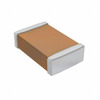 CL21C122FBFNNWE
CL21C122FBFNNWE CL05C8R2CB5NNND
CL05C8R2CB5NNND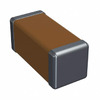 1808CC153KBT9A
1808CC153KBT9A F931D685MAA
F931D685MAA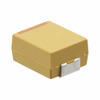 TRJC157K006RRJ
TRJC157K006RRJ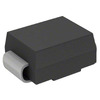 ES1B-13-F
ES1B-13-F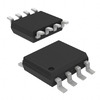 ATTINY25V-10SU
ATTINY25V-10SU MAX931ESA+
MAX931ESA+ S29GL256P11TFIV10
S29GL256P11TFIV10
- V24B5M200BL
- MCP1321T-26GE/OT
- MPC8255AVVMHBB
- VI-JWB-IW
- MIC29300-5.0BU
- RT0805BRD0749R9L
- BTS410H2
- STP16C596TTR
- LPC1768FET100Z
- TP3070V-XG
- LMH6504MMX
- XC7A100T-1FGG484I
- BTA12-600BWRG
- MSP430F2011IPWR
- MC7812ACT
- BUF07703PWP
- AD7684BRMZ
- BCM56146A1KFEBG
- BU7833KUT
- CYNSE70129D-200BGC
- ICS671AGI-28LFT
- IDT7025L17J
- LM4931ITL
- MSM514400C-70SJDR
- PCM1607KPTR
- S908QC16M685
- SCF5249LPV120
- SSM6L16FE
- SY88923AVKCTR
- T89C51IC2-SLSIL
- TC4001BF
- AIC-500L
- PTPS65830YFFR
- HY5DU121622CTP-5
- K4S161622H-TC80
- KH25L12835FM2I-10G
- XC2V1000-6BG575C
- SAK-TC233L-32F200FAC
- 8D5-21F11SN